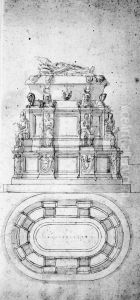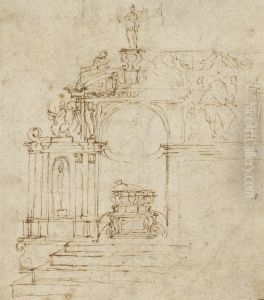Antonio Ii Da Sangallo Paintings
Antonio da Sangallo the Younger, born Antonio Cordiani in 1484 in Florence, Italy, was a prominent figure in the High Renaissance architecture scene. He was part of the illustrious Sangallo family of architects and engineers, which played a significant role in the Italian Renaissance. Antonio was the nephew of Giuliano da Sangallo and Antonio da Sangallo the Elder, both of whom were also renowned architects. This familial background provided him with a rich foundation in the principles of Renaissance architecture from a young age.
Antonio's early career was marked by his work in Rome, where he moved in 1503. He quickly became involved in some of the most important architectural projects of the time, initially working under the guidance of Donato Bramante, the original architect of St. Peter's Basilica. After Bramante's death, Antonio took over a number of his projects, and his career flourished. He became one of the most sought-after architects in Rome, working on a variety of projects including churches, palaces, and fortifications.
One of his most notable works is the Farnese Palace in Rome, which is considered one of the most impressive examples of High Renaissance architecture. Antonio took over the project after the death of the original architect, Alessandro Farnese (who later became Pope Paul III), and was responsible for much of its design and construction, which spanned several decades. He also worked on the completion of St. Peter's Basilica, one of the most significant projects of the Renaissance period. His contributions to the basilica's design, particularly the dome, were pivotal, although the dome was later altered by Michelangelo.
Antonio's work was characterized by his ability to blend innovation with the reverence for classical architecture that was a hallmark of the Renaissance. His designs often featured a harmonious balance between structural ingenuity and aesthetic beauty, making him a key figure in the development of Renaissance architecture.
Antonio da Sangallo the Younger's influence extended beyond his lifetime, as his works continued to be admired and studied by architects and historians. His legacy is a testament to the enduring power of Renaissance architecture and its impact on the development of Western architectural traditions. Antonio died on August 3, 1546, in Rome, leaving behind a body of work that remains influential to this day.

